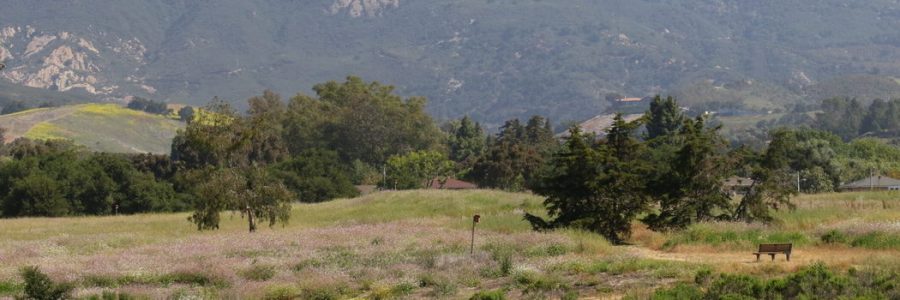
By Steve Ferry, Project Leader
[Editor’s note: This is the full article referred to on page 8 of El Tecolote March-May 2021.]
SBAS is tilting at windmills again! After a years-long effort to make the Strauss Wind Energy Project near Lompoc safer for birds (article here), SBAS has tackled the Manzana Wind Power Project.
The Manzana Wind Power Project is an existing wind farm with 126 1.5 MW wind turbines in the western Antelope Valley in California, along the southern foothills of the Tehachapi Mountains. Manzana has been in operation since 2012.
The main issue with the Manzana Wind Farm is possible impact on the California Condor. The condor population has been increasing and expanding its range further and further into the Tehachapis. Condors are now observed somewhat regularly in the vicinity of Manzana and other wind farms. The possibility of condors being killed at Manzana is real.
As a result, the U.S. Fish and Wildlife Service (USFWS) entered into discussions with the operator of Manzana to try to come up with a strategy to minimize the impacts on condors while also reducing the legal liability for Manzana.
The proposed solution was the following:
- Manzana would be given an incidental take permit which would allow it to take (kill) up to two free-flying condors (and two associated chicks) over the 30-year life of the project. This reduces the legal liability on Manzana.
- In return, Manzana would implement risk reduction measures to reduce the chances that a condor would be killed at the wind farm. These measures would include systems that would sense when a condor was approaching the wind farm and shut down wind turbines to avoid collisions with the blades.
- Also, Manzana would fund mitigation efforts including producing six extra condors in an already existing captive breeding program. These six new condors would offset the two that might be killed by wind turbines.
The USFWS put together an Environmental Assessment (EA) of their proposed plan and released it for public comment. This plan presented a real dilemma for SBAS: we have a strong aversion to allowing a take permit for any iconic endangered species, but particularly for the California Condor. Nevertheless, we recognize the realities “on the ground” – wind farms are an important source of renewable energy and Manzana already exists. The danger of harm to condors is real and must be mitigated to the extent possible. Thus, we reluctantly supported the approach that the USFWS and Manzana took to minimize risk and mitigate the potential take of condors.
SBAS got busy. We consulted with Garry George, National Audubon’s Clean Energy Initiative Director, and with the American Bird Conservancy. We attended USFWS briefings to environmental groups including other Audubon chapters, the Center for Biological Diversity, Defenders of Wildlife, Sierra Club, and Friends of California Condor Wild and Free.
We wrote a long letter on the USFWS EA (Manzana-Wind-comment-letter) suggesting many improvements that the USFWS should make to their plan, including:
- Consider impacts to other species, including the Golden Eagle
- Clarify what would happen if more than two condors were killed over the 30-year life of the project
- State how close condors have come to the wind turbines in the past
- Additionally consideration of possible collisions with stationary objects, such as power lines, adding markers to make power lines more visible, and spacing of power lines to accommodate the condor
- Improvements on how carcass surveys and carcass removals are done
- Improvements on how various condor detection systems would be implemented
- Stronger measures for public accountability and transparency
This strong letter received several compliments from other environmental groups. We hope the USFWS will use our comments to good effect to improve their plan. Thanks to Steve Ferry for the bulk of the writing, Ken Pearlman for organizing and editing, and valuable suggestions from Lori Gaskin, Mark Holmgren, and Katherine Emery.us

